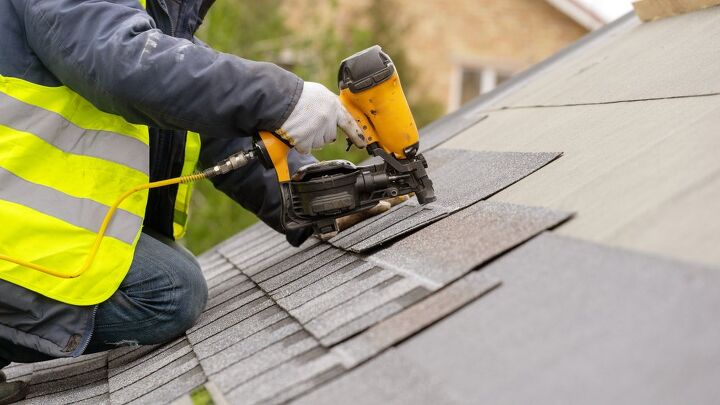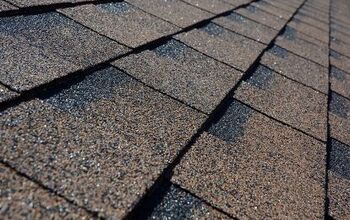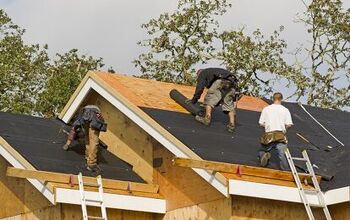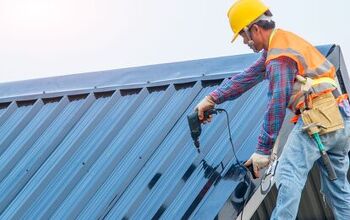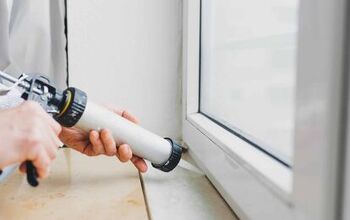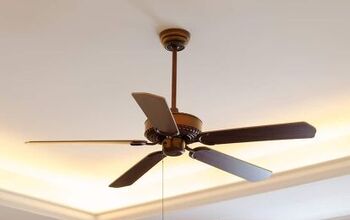How Many Layers Of Shingles Can You Put On A Roof?

You may be wondering how many layers of shingles you can put on a roof. This is a question that comes up often, and the answer depends on the size of your roof as well as the number of layers that have been installed in previous years.
Generally speaking, you should only put 2 layers of shingles on your roof before opting for a completely new structure. Roof shingles typically last an average of 25 years before problems like broken gutters or leaky attics occur. Choose an asphalt shingle roof for the most cost-effective process, durable material, and quickest installation.
This article will cover how many layers of shingles you can put on a roof and if your home needs a new layer. Additionally, we’ll dive into the lifespan of a shingle roof, and which types of shingles are superior!
Do You Need Roofing, Siding, or Gutter Installers?
Get free, zero-commitment quotes from pro contractors near you.

How Many Layers of Shingles Can You Put On a Roof?
Depending on where you live, and the building codes that apply to your home, a different allowance of shingle layers will pertain to you.
Most commonly, only 2 layers of shingles are allowed per roof. Regardless of the code in your area, never exceed a maximum of 3 shingle layers, or the integrity of your roof will be compromised.
Laying another set of shingles over your old layer is a way to save on excavation costs. However, some types of shingles are more suitable for this process than others.
The best roofs to put many layers on are high-quality asphalt shingles. This is because they’re affordable and durable, making them a popular roofing choice.
Overall, layering over a damaged shingle roof is cheaper and quicker than ripping off the existing material and starting from scratch.
Should I Put a New Layer of Shingles On My Roof?
When deciding whether or not to put a new layer of shingles on, you must weigh the pros and cons. Additionally, confirm that you only have a single layer of shingles, to begin with, or else you are not a good candidate for this project.
Advantages to adding a new layer of shingles on your roof are:
- It’s more affordable than a full roof replacement.
- It’s a faster process than removing the old roofing material.
Disadvantages to adding a new layer of shingles on your roof are:
- The shingles you’re adding will be much less durable than the old layer they’re covering and, therefore, won’t last as long.
- Second layers trap heat and degrade the first set of shingles more quickly.
- It adds more weight to the top of your house.
- It could look sloppy and lumpy.
Regardless of what you decide to do, it’s important to get an experienced contractor’s opinion in order to guarantee that the work is done safely and properly.
Do I Need a New Roof?
It’s possible that your damaged roof isn’t a good fit for a second layer of shingles, in which case, you’ll need an entirely new structure put on.
The average lifespan of a shingle roof is 25 years, depending on the type of roof you have and the climate you live in. If you’ve exceeded that period, it’s probably time to think about a replacement.
Signs you need a new roof are:
- Leaky or broken gutters
- Buckling or bubbly-looking shingles
- Unusual moisture levels in the attic
- Missing or cracked shingles
- Missing granules on shingles
If you notice any of the above issues happening to your roof, and you’ve already had 2 layers of shingles put on or aren’t the right candidate for layering, it’s time to consider getting a new roof.
Which Shingles Are the Best for Roofing?
Not all types of shingles are created equal. Which shingles are the best?
The most common types of roofing shingles are:
- Asphalt (there are 3 versions)
- Metal (i.e., aluminum, copper, steel)
- Cedarwood
- Wood
- Clay, concrete, or slate tiles
- Rubber
- Solar
The most important thing is that you use a high-quality material that’s suitable for your weather. Asphalt shingles with a steel ridge cap are a good option for most climates and are usually the most cost-effective.
If you live in an area with severe weather conditions, such as high winds or hail, consider using a metal shingle roof.
Clay or slate tiles are a good option for beauty and durability, but they’re not ideal in areas with a lot of rain or snow, as they can be quite slippery.
If you’re looking for an eco-friendly option, solar shingles are the best choice. They come with a higher price tag, but the energy savings will pay off in the long run.
Take into account the climate, your budget, and the look you’re going for when choosing your shingles. With so many options on the market, it’s easy to find something that will fit your needs.
Related Questions
Can I put shingles on a wet roof?
Shingling over wet roof sheathing or damp felt paper is not a good idea. When the sunlight hits your roof, the trapped moisture cannot evaporate.This creates a breeding ground for mold and mildew and can compromise the integrity of your roof. In addition, wet shingles are more likely to start peeling and curling.The best course of action is to wait for the roof sheathing to dry out before you install a new layer of shingles.
Are roofing shingles recyclable?
Roofing shingles are 100% recyclable.Using recycled shingles is also an option, but it’s best to put some research into this before you go ahead with your decision.If you want to ensure that your recycled shingles are environmentally friendly, make sure they’re made with post-consumer waste (PCW), which is the process of recycling materials left over by people.
Are roofing shingles fire resistant?
Shingles that are designated as “Class A” are the most fire-resistant and should be used by anyone living in a fire-prone location.Class A roof shingles include fiberglass, asphalt, and concrete or clay tiles.
Do You Need Roofing, Siding, or Gutter Installers?
Get free, zero-commitment quotes from pro contractors near you.

The Bottom Line
In this article, we covered how many layers of shingles you can put on a roof and what to look for when deciding if it’s time for a new one.
We also explained which types of shingles are best suited for your climate and why recycled materials should be researched before being used.
As always, consult a trained roofing professional when deciding to add a second layer of shingles or perform a complete excavation of your old roof!

Emily is a copywriter with over five years of experience in crafting content for the home renovation and remodeling industry. She loves house projects, whether it be painting a room or tweaking small design elements to transform a space. Her favorite aesthetic is french modern because of its clean lines and airy feeling! When not writing, Emily loves to travel and check out architectural details all over the world.
More by Emily Carr



